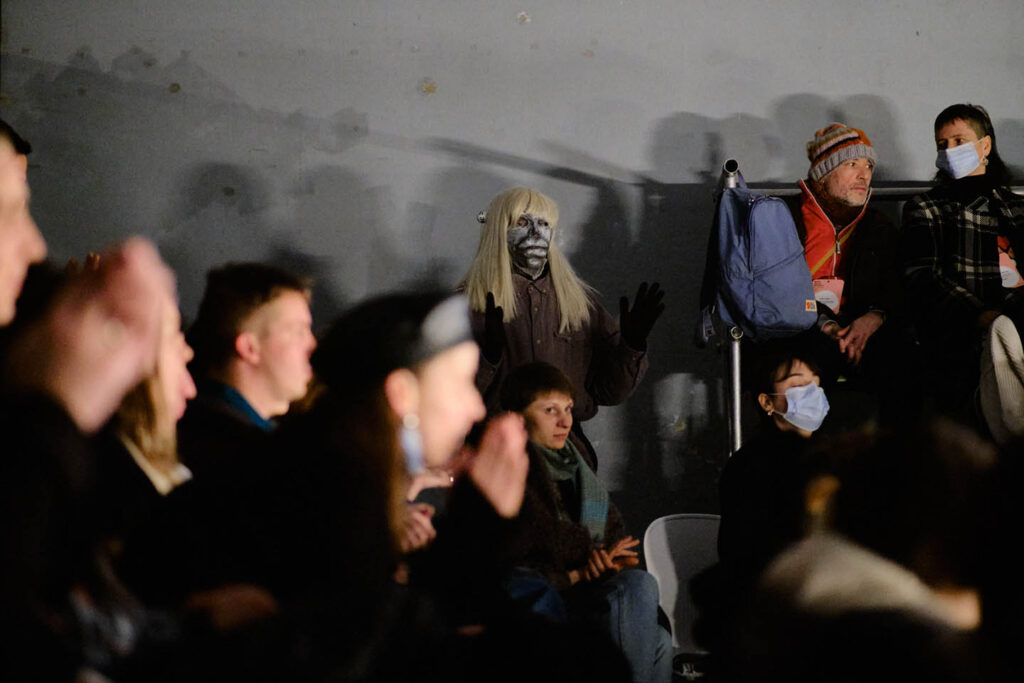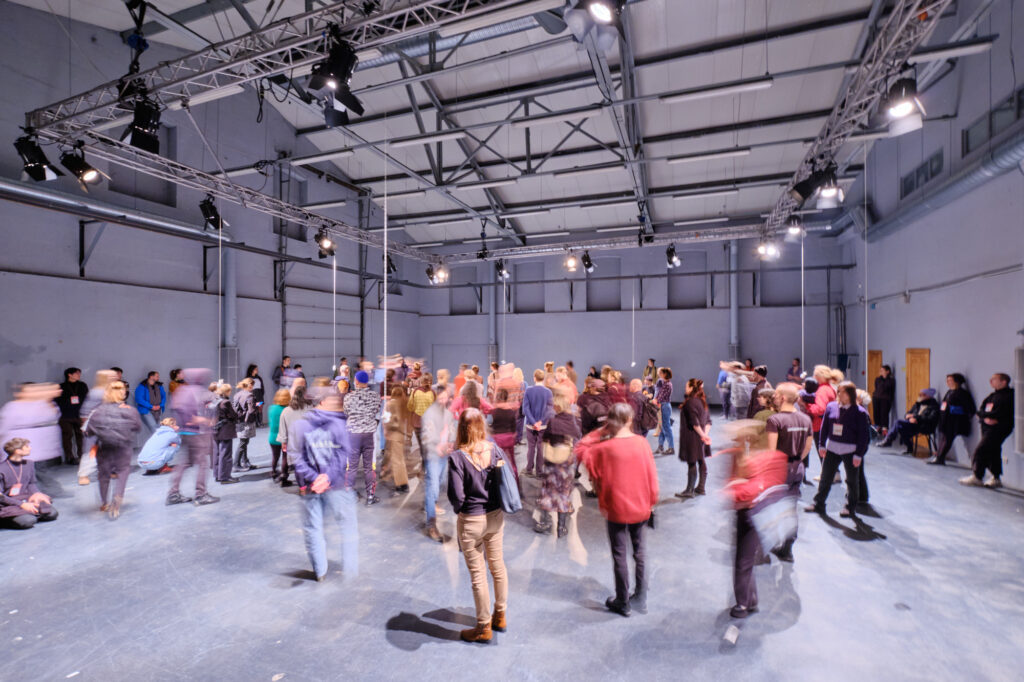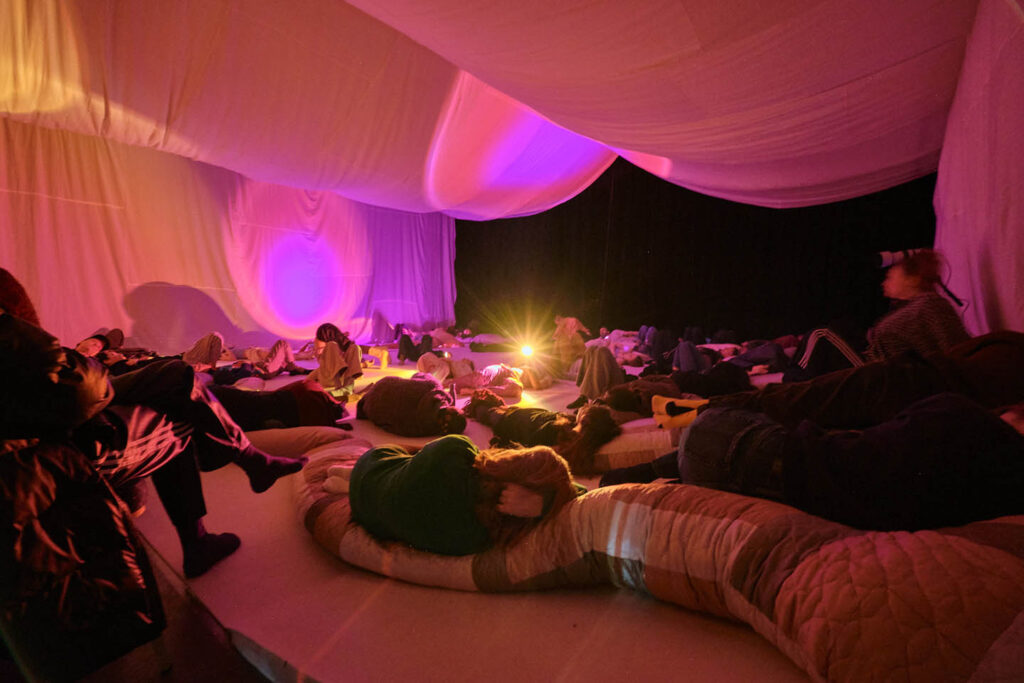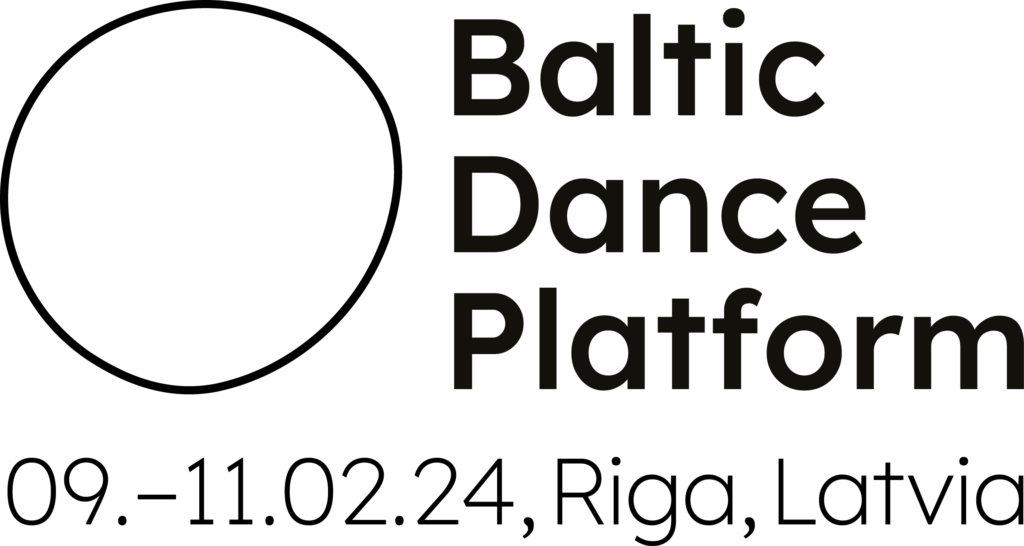All photos © Rihards Klaužs



Where does a dance “happen”? In the performance itself, obviously. But not only: it’s also happens in the audience experience. Indeed, some would argue that this is where the dance really happens: only in its reception does it become meaningful. I’m reminded of Roland Barthes’ famous dictum that the meaning of a text lies not in its origin (the author) but in its destination (the reader). Communicators of all kinds instinctively understand this, and they – we, I mean – know that to some extent or other, we are in the business of audience manipulation.
In live situations, directors sometimes reach their artistic (control-freaky?) fingers right out into the audience themselves, and purposefully start to choreograph the audience experience. At Baltic Dance Platform, I noticed three works that did this – one with the lightest touch, two with great deliberation.
The one that used a light touch was by no means a light piece. Netti Nüganen’s The Myth: Last Day was a powerhouse performance, Nüganen in consummate command of the audience’s attention, and skilled in those magical tricks of the theatrical trade: timing, pacing, delivery, repetition, variation, impersonation. But this was not quite a solo show: at some point, another creature wandered through from the wings, a bewigged, rubber-lipped bogey figure whom Nüganen did not see but nevertheless seemed to sense – a ghostly presence who remained mostly off-stage and mostly invisible, though sometimes appeared behind or among us. Largely absent, the apparition nevertheless had a disproportionately powerful effect on our experience: we felt spooked, unsettled by a barely-there presence that did not so much perform as prey upon our minds. Nicely done, I thought – and shivered.
You might think of Vērpete as a duet by Krišjānis Sants and Erik Eriksson, or even a quartet with two dancers and two musicians (Mārtiņš Miļevskis and Rihards Lībietis), but really it’s a piece for all four of them whoever else is in the room. The musicians take up two fixed points, while the dancers create a moving vortex with their corkscrew turns and gyroscope spins. The whole space feels like a spiralling forcefield in which we, the audience, can also move – whether to see the performers, to dodge them, or just because we feel the flow. It’s very physical, quite impersonal, rather fun, and strangely enlivening. Crucially, the performers keep their focus on each other and on the piece: there’s no moment when they “invite” us to participate. Their only address to us happens before the show starts, when they say it’s okay for us to move around if we want. After that, whatever happens, happens. Have we been “choreographed”? Yes – but not once did I feel directed.
“Inviting” audience participation is a tricky matter, swimming in the currents between control and consent, between request and response. The six performers of Sveta Grigorjeva’s Dances to Dream, Res(is)t and Sleep to managed this with care and consideration, I thought. The setup is a room in which the audience sits or lies on cushions and pillows. The live music (by Martin Kirsiste) is low-fi – fuzzy, like a blanket. There are plentiful silences that serve as breaths between the soundscape and the soft voices. Each of the dancers moves in her own, low-key way, with no overt sense of “performing” for an audience. Each scene takes its own time, goes at its own pace. Everything is done to relax us so that when we are addressed directly, we’re receptive to invitations: to clench and release certain muscles, for example (easily done imperceptibly), to touch our own heads, or breathe in certain ways. Unlike in Vērpete, I did feel directed – but any resistance had been massaged out of me, so I was totally fine with that. The audience manipulation here felt almost therapeutic.



